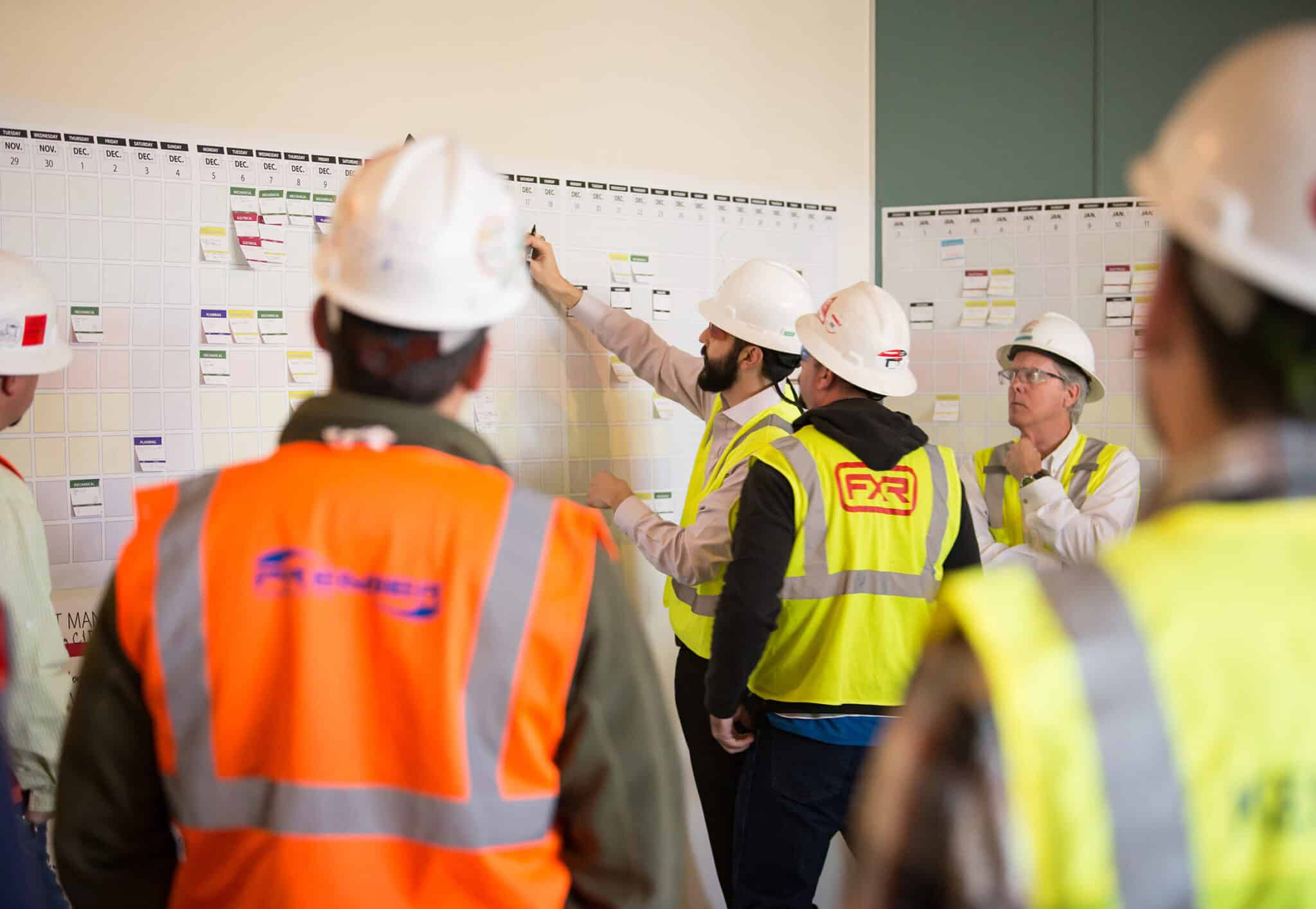Our 47 years in construction has shown us that there are a few common “ailments” in our industry that can (to one degree or another) lead to a project’s failure and ultimately a dissatisfied client. These ailments are applicable to all construction types.
Whether you’ve hired Skiles Group or another GC to work for you, we hope to simplify your construction experience and help you to find your way towards the completion of a successful project. We believe that in being proactive and thoughtful about the prevention of these foreseeable, typical problems, we can increase the likelihood that you’ll succeed with your project’s goals.
This Clinic is Part #2 of a special blog series written with you, the potentially dissatisfied client, in mind. Read Part #1 on Managing Client Expectations.
Clinic #2 – INADEQUATE SCHEDULE MANAGEMENT
SYMPTOMS: Patient presents with feelings that their project schedule seems to be behind, with key milestones delayed.
Chief complaint is that they are unsure that the project will be completed on time due to the lack of information and poor communication from their contractor.
Patient also reports feeling stressed and embarrassed after sending turnover dates to the project stake holders and then having to modify them when they are not met.
DIAGNOSIS: CONTRACTOR’S FAILURE TO ADEQUATELY MANAGE A PROJECT’S SCHEULDE.
CAUSE: This disease can begin with the creation of an unrealistic schedule during preconstruction, or it can begin with failure to effectively involve you and other project stakeholders and team members during the initial scheduling. All too often, contractors prepare schedules as if nothing will go wrong, and have no corrective strategies to apply when things go awry and the work falls behind.
When a contractor gets behind schedule, they often try to make up the delay at the expense of quality, and/or cost — or don’t make it up at all, at the cost of your satisfaction and potential lost revenue.
TREATMENT: Repairing the damage is difficult, but not impossible. It’s important that you be able to recognize the contractor’s efforts to correct any misunderstandings and move forward together as a team. When your contractor become aware of the problem, they should take the following steps to begin the healing process:
- Apologize
- Commit to being transparent, collaborative, and communicative
- Involve you in working towards recovery
- Actively listen to you
- Seek out the input of their trade partners
- Set-up a Pull Plan scheduling session to get the project back on track
- Ask for feedback
PREVENTION: Identifying a problem and working to fix it is good, but anticipating a problem and working to avoid it is better. Ideally, everyone involved wants to avoid damaging the client/contractor relationship, detrimental cost and schedule impacts, aggravation for stakeholders and team members, and any other negative ramifications of predictable project illnesses like this one.
Ultimately, less time and money will be spent on preventions than on cures. Taking care to avoid obstacles and mitigate the impacts of a construction project is part of a contractor’s responsibility to provide you with a simplified construction experience. For these reasons and others, prevention should always be a shared priority. Steps that your contractor can take to prevent this illness include:
- Communicating and collaborating with you during the scheduling process
- Employing Pull Plans during the creation of all phase and milestone schedules
- Monitoring the team’s progress via Percentage Plan Complete (PPC)
- Transparently reporting on schedule tracking throughout the project’s lifecycle
- Eliminating unnecessary tasks that can have negative schedule impacts
- Developing a contingency program for each discipline
- Agreeing ahead of time on ownership of associated costs for any corrective actions
- Taking care to never over promise and being clear about schedule impacts on change orders
- Creating and maintaining realistic expectations
A construction project is a team effort, and you shouldn’t underestimate your responsibilities towards prevention, too. Your contractor is your advisor, but they are also your partner. Work with them by helping them understand how to work with you. Ask questions, share your ideas, and clearly communicate your hopes, needs, and expectations for the smooth delivery of your project early on, so you kick off your project and start working together with your best foot forward.




